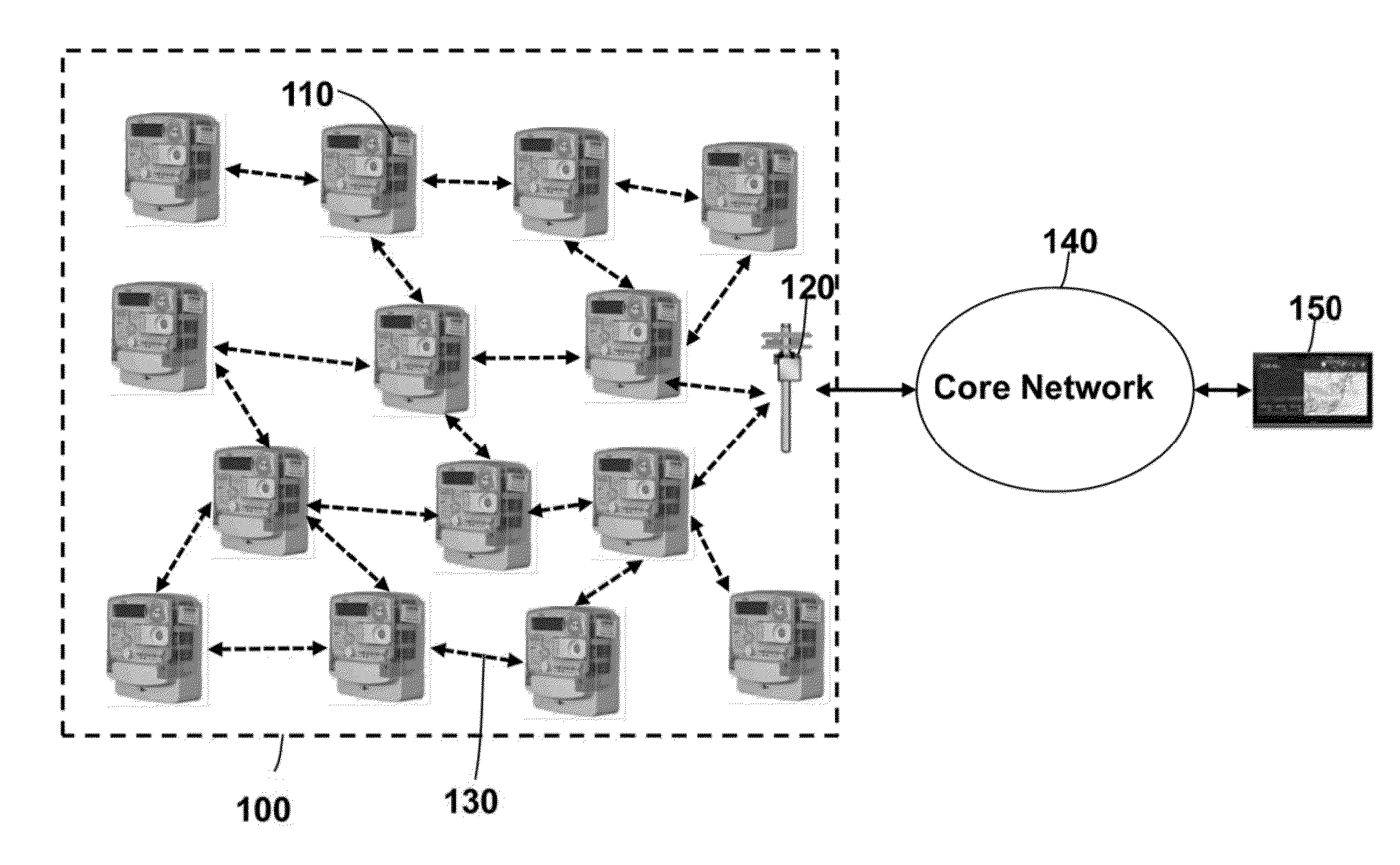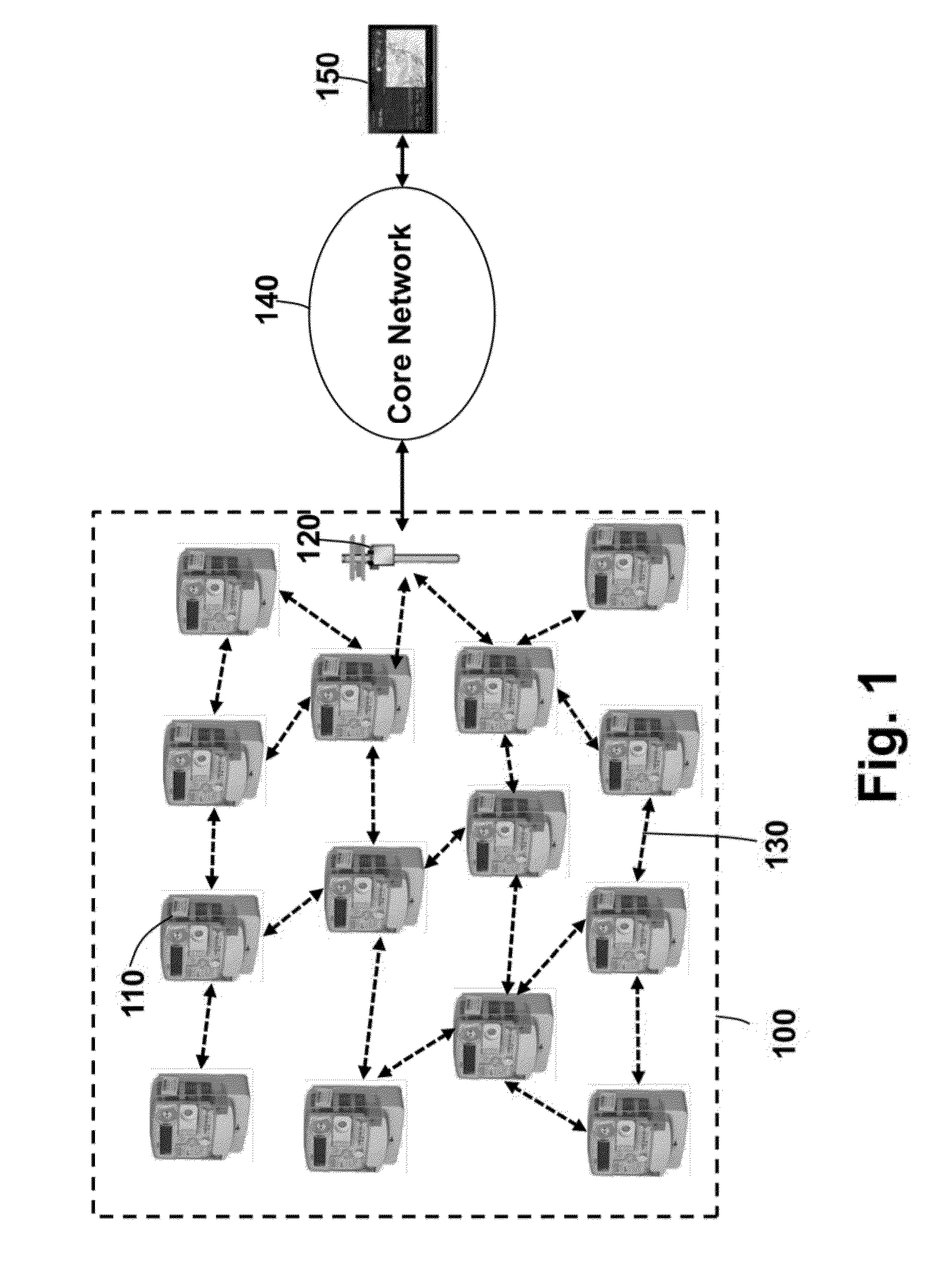Method for Discovering Neighboring Nodes in Wireless Networks
- Summary
- Abstract
- Description
- Claims
- Application Information
AI Technical Summary
Benefits of technology
Problems solved by technology
Method used
Image
Examples
Embodiment Construction
[0023]FIG. 1 shows a smart meter network in which embodiments of the invention can operate. The smart meter network 100 includes a set of smart meters 110 and at least one data concentrator 120. A large network typically includes a set of concentrators. The smart meters and the concentrator form a mesh topology and communicate using wireless links 130. In practice, a smart meter networks can include millions of nodes.
[0024]Although the example network described herein is for smart meters, it is understood that the embodiments can also be applied to other wireless networks, such sensor networks, and networks used for industrial automation, building and home automation, and environment monitoring.
[0025]On an uplink, the smart meters transmit data packets through one or multiple hops to the concentrator. The concentrator transmits the data packets to a core network 140. The core network 140 transfers data packets to a metering data management system (MDMS) 150.
[0026]On a downlink, the ...
PUM
 Login to View More
Login to View More Abstract
Description
Claims
Application Information
 Login to View More
Login to View More - R&D
- Intellectual Property
- Life Sciences
- Materials
- Tech Scout
- Unparalleled Data Quality
- Higher Quality Content
- 60% Fewer Hallucinations
Browse by: Latest US Patents, China's latest patents, Technical Efficacy Thesaurus, Application Domain, Technology Topic, Popular Technical Reports.
© 2025 PatSnap. All rights reserved.Legal|Privacy policy|Modern Slavery Act Transparency Statement|Sitemap|About US| Contact US: help@patsnap.com



